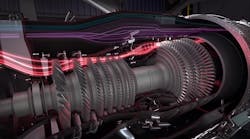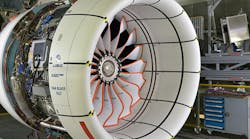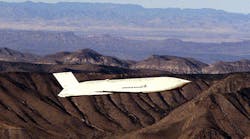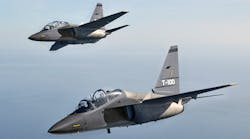The U.S. Air Force Life Cycle Management Center at Wright Patterson AFB in Ohio granted a $1-billion contract to GE Aviation, to proceed with the development of its three-stream adaptive cycle engine. The project, organized under the USAF’s Adaptive Engine Transition Program is schedule to run five years, through 2021, and will include testing of component parts, rig testing, and engine testing.
Pratt & Whitney was awarded a comparable new contract, and will design, build, and test adaptive engines in the 45,000-lb thrust-class, as part of its effort to advance of military fighter engine technology.
The USAF’s Adaptive Engine Transition Program is focused on developing three-stream architecture and other advanced propulsion technologies for high-speed and long-endurance performance requirements.
Fixed-cycle engines for military aircraft are limited, or "fixed," to one capability, GE noted: either maximum power or fuel efficiency, which restricts performance and increases sustainment costs. GE's AETP engine is able to alter its focus from a high-bypass, fuel-efficient engine to a low-bypass, high-performance engine needed for fighter jets. The adaptive feature is combined with an additional source of air, called a "third stream of cooled air," that can be used to increase thrust, improve fuel efficiency, and reduce the aircraft heat load.
The AETP began in 2007 at the Air Force Research Laboratory, and has undergone initial development under the auspices of the Air Force Research Laboratory (AFRL) through the Adaptive Versatile Engine Technology (ADVENT) program that began in 2007 and the Adaptive Engine Technology Development (AETD) program that began in 2012.
GE Aviation completed its AETD Preliminary Design Review with leaders from the U.S. Air Force and U.S. Navy, plus NASA in March 2015, after testing of the initial adaptive-cycle, three-stream engine began in 2014.
According to GE, the adaptive cycle, three-stream engine it has developed will extend a jet’s operating range by more than 30%, improve fuel consumption by 25%, and increase thrust by more than 10%. With the AETP and follow-on development programs, GE's engine could be ready to power the US military's most advanced combat jets.
Pratt & Whitney demonstrated a three-stream fan in a rig in 2013, as part of the AETD program. Early next year it aims to demonstrate the three-stream technology in an actual engine environment.
"For nearly a decade, GE Aviation has successfully partnered with the Department of Defense to effectively design, manufacture and test our revolutionary combination of engine architecture, compression technology, cooling technology and material technology advancements," stated Dan McCormick, general manager of GE Aviation's Advanced Combat Engine programs.










